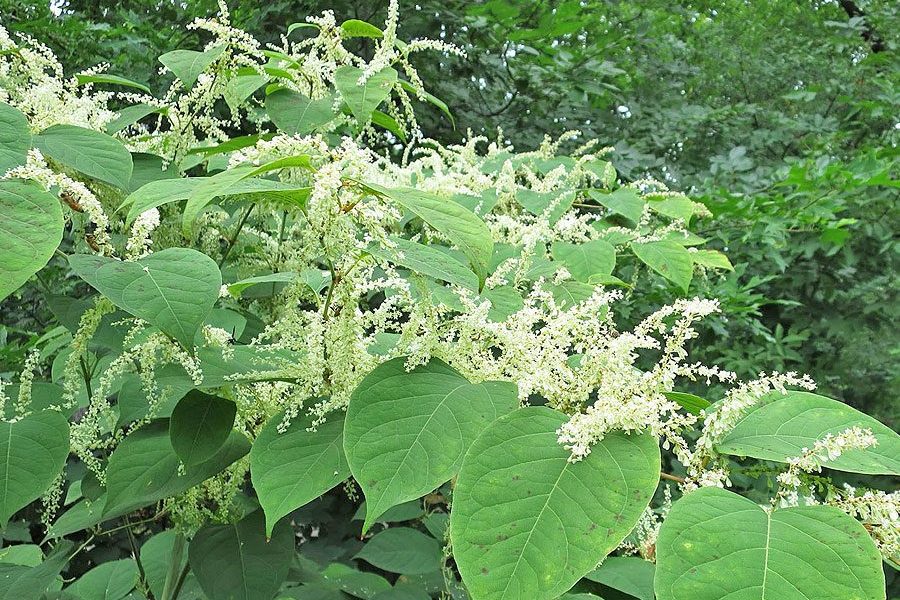
Japanese Knotweed (Fallopia japonica) is a large, clump forming weed that spreads rapidly. It is one of the world’s top 100 invasive species. Left untreated this plant can spread relentlessly and can cause damage to property.
Appearance
Starting from early spring bamboo-like stems, form shoots with a red/purple tinge. Its small bright red shoots look similar to asparagus. Growing taller towards the summer, Japanese knotweed starts to sprout deep green, heart shaped leaves. Throughout summer leafy foliage grows and small cream flowers will appear. In Autumn, the stems will change to dark brown and the leaves will begin to wilt, turning yellow in colour. During winter the foliage dies back leaving dark brown brittle hollow canes.
Why is Japanese Knotweed such a problem?
It’s destructive nature and advanced root network (the rhizomes), will grow through any structure, including tarmac, walls, foundations and drains. This can result in costly repair, if not eradicated early.
-
-
-
-
-
-
Highly invasive, infestations can take hold in just a couple of weeks. Just a piece the size of your thumb nail is enough to grow a new plant.
-
Selling your home? Mortgage lenders require assurance that Japanese Knotweed will be eradicated before agreeing to funds.
-
The hardiness of this weed makes it difficult to eliminate.
- Japanese Knotweed is classified as ‘controlled waste’ under the Environmental Protection Act 1990. Plant material can only be disposed of by someone licenced.
-
-
-
-
-
Legalities
Although it is not illegal to have Japanese knotweed on your land, under the Wildlife and Countryside Act 1981, it is illegal to allow it to distribute into the wild. Once identified, taking action as soon as possible is vital to ensure that knotweed is controlled and ultimately eradicated. You could be prosecuted, if you find Knotweed on your premises and allow it to spread to neighbouring properties because it was left untreated. The Environmental Protection Act 1990 makes it clear that Japanese Knotweed cannot be disposed of with normal garden waste due to high risk of spreading this invasive plant. It has to be removed and destroyed by a licenced person or company.
Removal
The following methods have been tried to eradicate Japanese Knotweed (Fallopia Japonica):
-
-
-
-
Methods of removal.
- Excavation – By excavating the area Japanese Knotweed can be successfully removed. However, when it appears in walls or very close to buildings, it is not the always the best option for eradication.
- Weed Killers – Most weed killers do not penetrate deep enough to destroy the plant. The surface weed may appear to be dead, yet the rhizomes (roots) are still alive. Many weed killers need to be reapplied for many years, which can incur huge costs.
-
-
-
Our Solution
Our specially formulated herbicide has been created to ensure total eradication of your Japanese Knotweed, giving you complete confidence that it will no longer be a problem.
Carefully developed over the last 20 years, our 100% Guaranteed Treatment Programme will destroy Japanese Knotweed plants and rhizomes, preventing any regrowth.
We tailor make each Treatment Programme, with our Eradication plans covering both residential and commercial sites.
Unsure if you have Knotweed?
Japanese Knotweed can easily be mistaken for other plants, if you are unsure simply contact us for further information.
- Client : Japanese Knotweed
- Category : Eradicate
- Date : June 10, 2020

